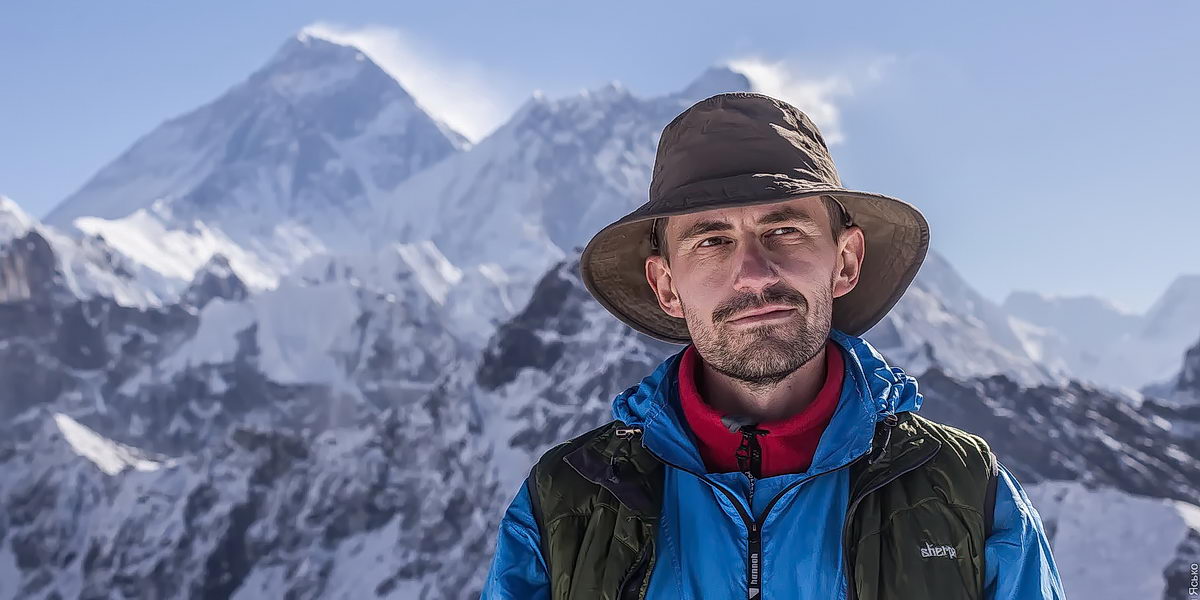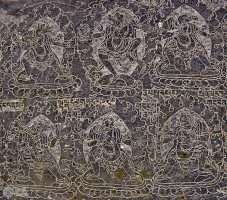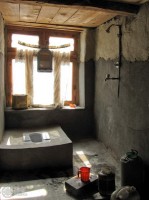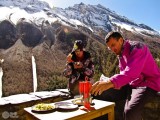 The “noon” sequence begins again (from the word “half-day”, although “noon” is also suitable). This is when you wake up early in the morning, start walking and bam! – It’s only 12 on the clock, and you’ve already reached your destination 82_%D0%BD%D0%B0%D0%B7%D0%BD%D0%B0%D1%87%D0%B5%D0%BD%D0%B8%D1%8F” title=”Horror Film Final Destination” >movie of the same name completely spoiled the karma of this phrase).A long-standing tourist habit of going from breakfast to dinner (and also digging from here to lunch) does not allow you to sit quietly in one place. And the height does not allow to go further (acclimatization schedule!). So you have to arrange long dinners, run in radials and talk to people (God, how unusual).Route: Braga – Manang – Khangasar.Traveled: 9.5 km in 4.5 hours, radial 1.5 km in 1 hour.Total ascent – 670 m, total descent – I don’t remember.Altitude above sea level: 3734 m.Terrain: sparse juniper shrub, rocky wasteland.6:20. Instead of barely opening our eyes, rushing along the path, we go to the dining room for breakfast. Fried eggs, hot milk and toast with jam (English breakfast?).
The “noon” sequence begins again (from the word “half-day”, although “noon” is also suitable). This is when you wake up early in the morning, start walking and bam! – It’s only 12 on the clock, and you’ve already reached your destination 82_%D0%BD%D0%B0%D0%B7%D0%BD%D0%B0%D1%87%D0%B5%D0%BD%D0%B8%D1%8F” title=”Horror Film Final Destination” >movie of the same name completely spoiled the karma of this phrase).A long-standing tourist habit of going from breakfast to dinner (and also digging from here to lunch) does not allow you to sit quietly in one place. And the height does not allow to go further (acclimatization schedule!). So you have to arrange long dinners, run in radials and talk to people (God, how unusual).Route: Braga – Manang – Khangasar.Traveled: 9.5 km in 4.5 hours, radial 1.5 km in 1 hour.Total ascent – 670 m, total descent – I don’t remember.Altitude above sea level: 3734 m.Terrain: sparse juniper shrub, rocky wasteland.6:20. Instead of barely opening our eyes, rushing along the path, we go to the dining room for breakfast. Fried eggs, hot milk and toast with jam (English breakfast?).
8:00. We go out on the route and get stuck almost immediately – I start photographing the Mani-wall with a particularly picturesque turtle.
8:30. A completely flat road led us to Manang. This is a kind of capital of the district – a large village with a bunch of hotels, shops and even cultural institutions. In the role of carriers of culture here are:
- local health center with regular evening lectures on “Prevention of Altitude Sickness”
- a couple of hotels that have equipped their dining rooms with home theaters. Spin Mountaineering films: Vertical Limit, Touching The Void, Northern Wall, K2, Rock Climber, etc. About Vysotsky and “Vertical” in Manang is not yet known.
We don’t get to the cinema and the lecture, it’s too early, but we look into the first-aid post (when we approached, the pharmacist was doing exercises in the yard). We buy cough medicine (for Taras) and some antibiotics (for peace of mind).
The shopping doesn’t end there. The next big village with big shops will be just behind the big pass (Thorong La). Therefore, we diligently replenish the stocks of biscuits, chocolate and nuts, and also buy 100 grams of yak cheese to sample. In fact, it is not at all necessary to replenish stocks – there are small shops in every village, but the instinct of money-grubbing haunts the head and shoulders, on which all the belongings move along the route.
Pale faces and porters huddle along the central street. This is preparing to enter the route of large commercial groups. The people are the most motley, it’s fun just to go and look at who is wearing what, who speaks what languages, and with what intonations they pronounce the sacred sound combination of Thorong-La. Well, people are full of anticipation, and we are calm, because we know for sure that it is better on Tilicho!
By the way, it’s time to turn off the highway – our path will go to the left. From the outskirts of Manang, you can clearly see the turquoise lake at the base of the Gangapurna glacier. For some reason, we don’t go to him (we’ll have to visit here again. Who is with me?).

The valley of the Marshyandi River (another spelling, there are at least a dozen of them) is still flat and wide, but a couple more kilometers and it will be divided into two branches: to the left – Tilicho, to the right – Thorong-La. At this point, two tributaries of the river merge and you can clearly see how different the water is in them. In one – cloudy, light gray, in the other – transparent, almost blue. Just like in a fairy tale – living and dead water: …Koschei galloped, caught up with Ivan Tsarevich, chopped him into small pieces and put him in a tar barrel; he took this barrel, fastened it with iron hoops and threw it into the blue sea, and took Marya Morevna to him.The eagle rushed to the blue sea, grabbed and pulled the barrel ashore. The falcon flew for living water, and the raven for dead water.All three flocked to one place, cut the barrel, took out the pieces of Ivan Tsarevich, washed them and folded them as necessary.The raven splashed with dead water – the body grew together, connected. The falcon splashed with living water – Ivan Tsarevich shuddered, stood up and said:- Oh, how long I slept!
While I was thinking about the role of water in Russian folk tales, our group was caught up not by mythical, but by real Russians. And not Ivan Tsarevich, but Marya Morevna. Three things at once.The fact that the girls were “ours” and not “bourgeois” became clear at first glance – they were given out by hefty 100-liter backpacks behind their backs. Naturally, no porters and guides.
Comparing everything I saw, I decided that this was a great opportunity to show off my erudition, and dumbfounded a girl passing by, asking in Russian “To Tilicho with an overnight stay, and then straight to Jomsom?” There is such a route, bypassing Thorong La, very wild and autonomous. Autonomous in the sense that there are no villages and hotels there, you need to carry a tent, thick rugs for sleeping on the snow, a stove and food for 3 days. Wildness (i.e. desertedness) of the route is explained by this.The tourists nodded in unison and asked if we had seen the fourth, the fastest of them. Apparently, she was already at five thousand, rowing snow, and her friends rushed to catch up with her. We were in no hurry. There was nothing left to finish.

11:30. Arrived in Khangasar. We check into a red hotel – the second from the beginning of the village, just above the Buddhist gate, I don’t remember the name. We choose this place, not because of low prices, but because of the friendly, accommodating hostess. We plan to leave some things here, which we will pick up the day after tomorrow on our way back from the lake. Therefore, trust in the hostess is a much more important factor for us than the availability of water.
Yes, there is no running water in the hotel. Those. the shower does not “shine” us. But here it is inexpensive – 50 rupees for a 2-bed room, 200 rupees for a portion of Dal Bata. There is a free socket in the kitchen. Toilet on the floor. The rooms are small (which is good – they heat up faster) with warm Chinese blankets.12:30. Afternoon clouds are just beginning to pile up on the horizon, the brightest Himalayan sun is shining, and we decide to have dinner not in the dining room, but on the roof. So, a small picnic with a view of Tarke Kang (aka Glacier Dome – ice dome) and Gangapurna.What I love about hiking is the opportunity to eat while admiring not the screen of a laptop or TV, but wonderful mountain landscapes. Nepal has all the conditions for spectacular dinners – many mountains and many hotels whose owners know how to attract tourists and set up dining tables in the most picturesque places (I especially remember the gatherings overlooking Machchapuchar and tables at Annapurna Base Camp).
15:30. A little afternoon nap rejuvenated us (weakened by huge portions of fried rice). Now you can safely go to the evening radial. Taras traditionally skips this event, and my wife and I walk together.The clouds have already covered the surrounding landscapes tightly and we direct our research interest to the village streets, windmills, skinny cows and furry horses. At the same time, we find the path along which we will go tomorrow.When we returned, it turned out that the hotel had new guests (before that we were alone there). Two friends from Dnepropetrovsk-Jerusalem-Washington-Toronto (that’s right, from everywhere at once) came today from Pisang. This is our double norm, well done guys. We will meet with them more than once on the route.
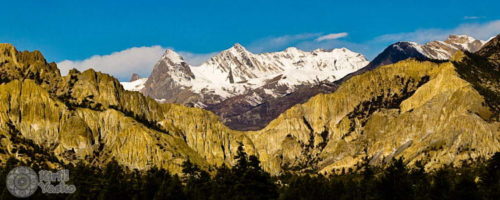
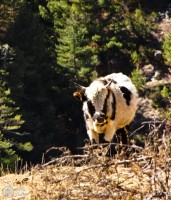
As the sun went down, it became quite cold and we hid in the kitchen. Not in the dining room, but in the kitchen – near the stove, on which the hostess cooked dinner for us. It was very interesting to watch her manipulate with a dozen frying pans and frying pans. At the same time, I began to write a diary, and Sveta began to question the hostess “for life.”It turned out that she really managed the hotel alone. The children go to school in Kathmandu, where she will return only at the end of the tourist season. In the meantime, numerous grandmothers and aunts look after them. The family is large and well scattered around the world: the hostess’s sister keeps a similar hotel on the other side of Annapurna, one brother works as a dentist in Hong Kong, another trades in Thailand, the third in the States. Last winter she visited her “Thai” brother and was struck by Thai high prices and manners. He says that he will not exchange Nepal for any “foreign countries”.According to her, Khangasar, like other villages on the route, is almost completely empty in winter. There are two or three families who have a lot of livestock. The rest go down into the valley. There are still no tourists at this time and there is nothing to do here.In response, we talk about the twists and turns of the Crimean tourism business (our work) and life in general in Ukraine.We go to sleep with a sense of accomplishment – the cultural exchange has taken place! Warm blankets reliably protect from the cold, giving us a rest before the difficult road that will take us tomorrow to the Mexico border and Nepal.Report title.
